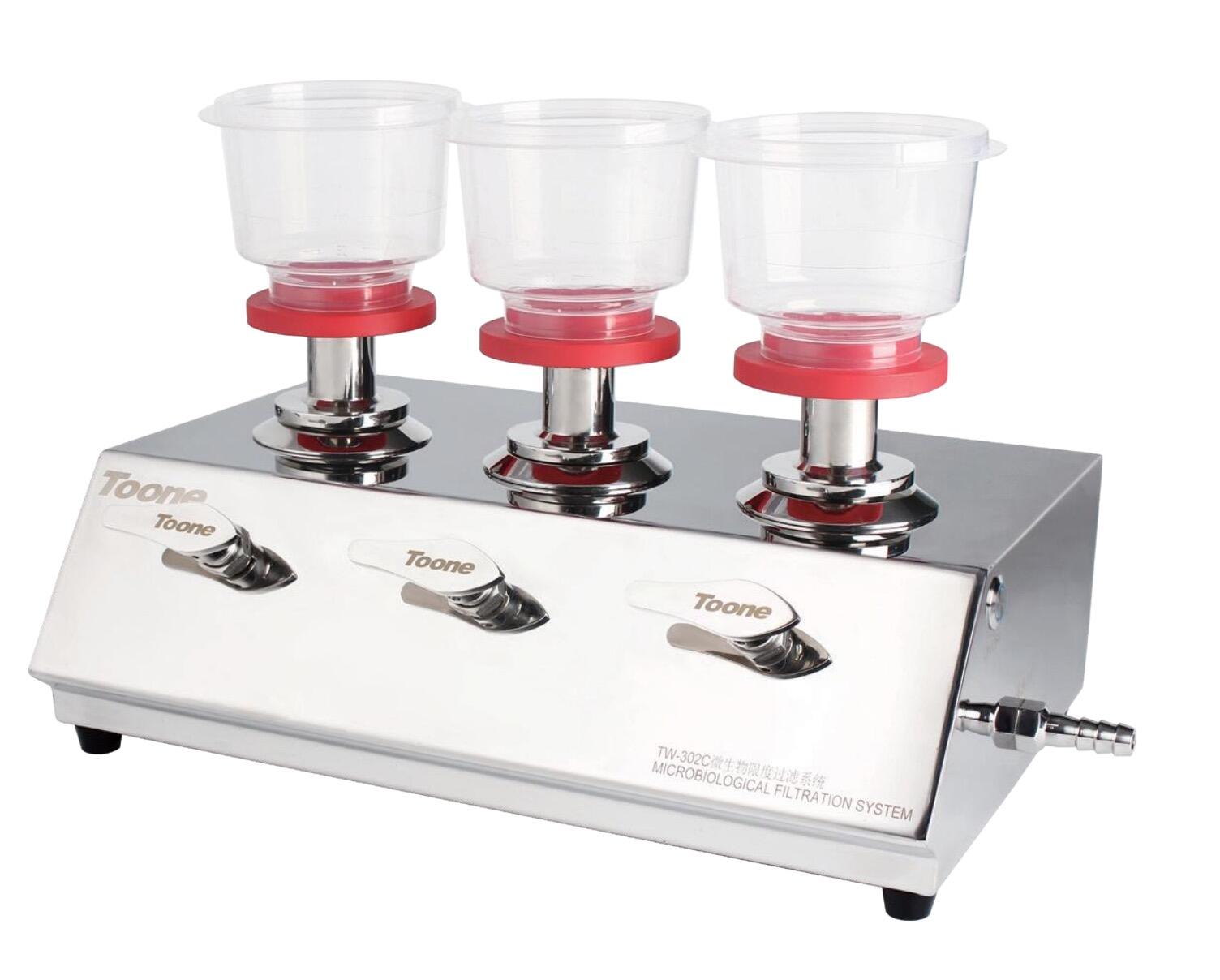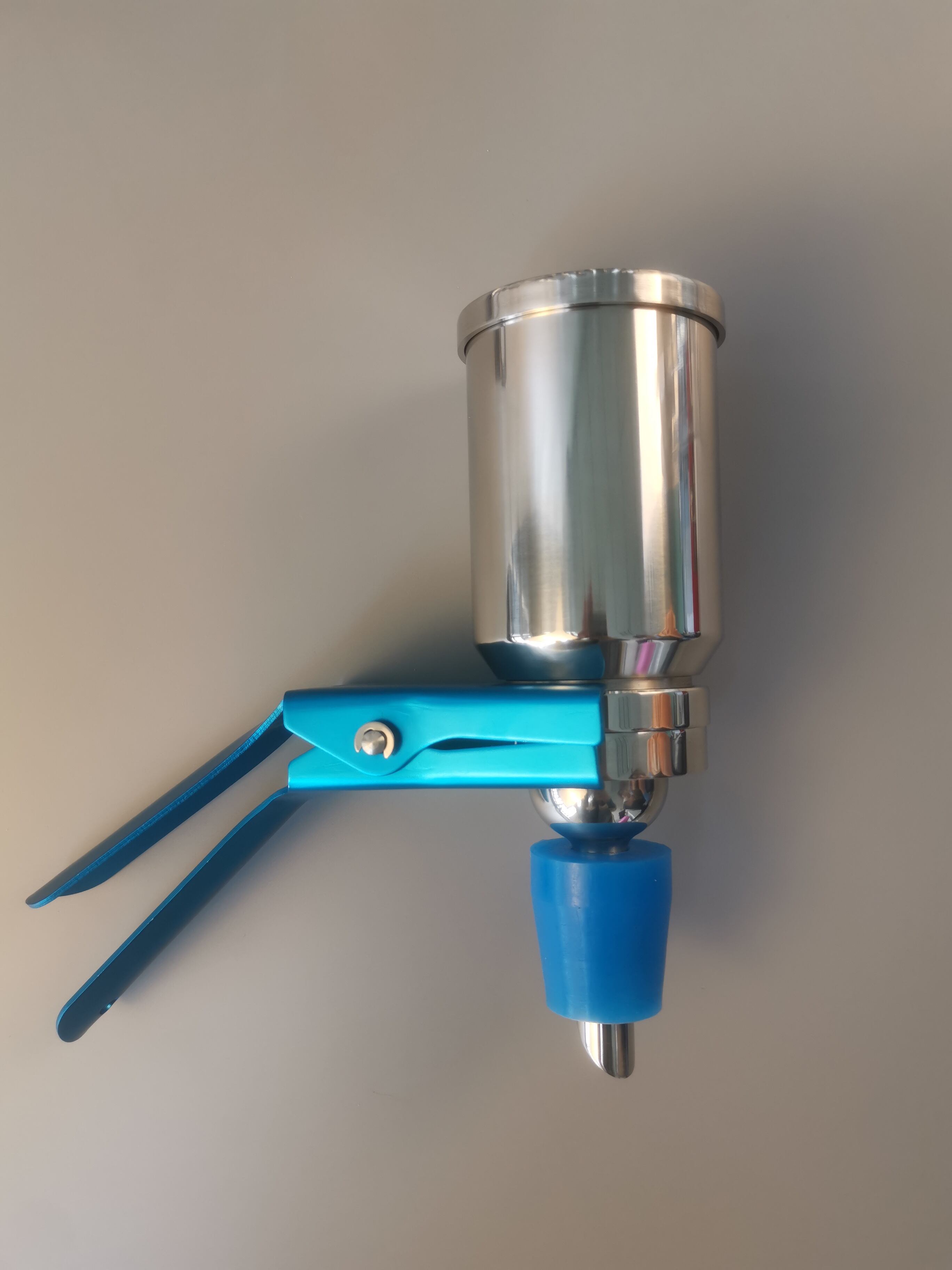Ժամանակակից լաբորատորիաներում ֆիլտրացման համակարգերի կարևոր դերի հասկացությունը
Լաբորատորիական ֆիլտրացիայի միավոր համակարգերը ներկայացնում են գիտական հետազոտությունների և վերլուծության հիմնարար սկզբունքը, որոնք հանդիսանում են տարբեր նյութերի բաժանման, մաքրման և վերլուծության անհրաժեշտ գործիքներ։ Այս բարդ համակարգերը համատեղում են ճշգրիտ ինժեներական լուծումներ և առաջադեմ նյութեր՝ ապահովելով ճշգրիտ և հուսալի արդյունքներ տարբեր գիտական կիրառություններում։ Ֆարմացեւտիկական մշակումից մինչև շրջակա միջավայրի փորձարկումները, ճիշտ լաբորատոր ֆիլտրացիայի Համակարգ կարող է տարբերություն կազմել հայտնագործությունների և անորոշ արդյունքների միջև։
Ժամանակակից լաբորատոր աշխատանքը պահանջում է ավելի ճշգրիտ և արդյունավետ ֆիլտրացման լուծումներ: Քանի որ հետազոտությունների բարդությունն աճում է, իսկ որակի չափանիշները դառնում ավելի խիստ, ճիշտ ֆիլտրացման սարքավորումների ընտրության կարևորությունը դառնում է հիմնարար: Գիտնականներն ու լաբորատոր տեխնիկները հիմնվում են այս համակարգերի վրա՝ օրինակի ամբողջականությունը պահպանելու, փորձերի վերարտադրելիությունն ապահովելու և կանոնակարգային պահանջներին համապատասխանող արդյունքներ ստանալու համար:
Առաջադեմ ֆիլտրացման համակարգերի հիմնական բաղադրիչներ
Թաղանթի տեխնոլոգիա և ֆիլտրի նյութեր
Յուրաքանչյուրի սրտում լաբորատորիական ֆիլտրացիայի միավոր գտնվում է թաղանթի տեխնոլոգիան: Ժամանակակից համակարգերը օգտագործում են տարբեր թաղանթի նյութեր, որոնցից յուրաքանչյուրը օպտիմալ է կատարել հատուկ կիրառությունների համար: Պոլիէթերսուլֆոն (PES) թաղանթները գերազանցում են սպիտակուցների ֆիլտրացման մեջ, իսկ նայլոնային թաղանթները իդեալական են համարվում ջրային լուծույթների համար: PTFE թաղանթները ցուցադրում են արտակարգ քիմիական դիմադրություն, ինչը դրանք դարձնում է հիանալի ընտրություն ագրեսիվ լուծիչների համար:
Ֆիլտրի նյութերի ընտրությունը կարևոր ազդեցություն ունի ֆիլտրացման արդյունավետության և նմուշի որակի վրա: Առաջադեմ նյութերը ներառում են այնպիսի հատկանիշներ, ինչպիսիք են սպիտակուցների ցածր կապվածությունը, նվազագույն էքստրահանվողները և բարելավված հոսքի արագությունները: Այս հատկանիշները ապահովում են ավելի արագ մշակման ժամանակահատված՝ պահպանելով արժեքավոր նմուշների ամբողջականությունը:
Օժանդակման և կառուցվածքային մասեր
Լաբորատոր ֆիլտրացման համակարգի կառուցվածքային տարրերը կարևոր դեր են խաղում դրա աշխատանքի ընթացքում: Բարձրորակ աջակցող ցանցերը ապահովում են հոսքի համաչափ բաշխում՝ խուսափելով մեմբրանի դեֆորմացիայից ճնշման տակ: Ճիշտ նախագծված կառուցվածքները ապահովում են արտահոսքից ազատ աշխատանք և հեշտ հավաքում, ինչը նվազեցնում է ֆիլտրի փոխարինման ընթացքում աղտոտման ռիսկը:
Ժամանակակից կառուցվածքների նախագծումը ներառում է էրգոնոմիկ հատկանիշներ, որոնք հեշտացնում են ֆիլտրի արագ փոխարինումը և նվազեցնում օպերատորի հոգնածությունը: Որոշ առաջադեմ համակարգեր ներառում են թափանցիկ կառուցվածքներ, որոնք թույլ են տալիս ֆիլտրացման գործընթացի տեսանելի հսկում և հնարավոր խնդիրների վաղաժամկետ հայտնաբերում:
Ժամանակակից ֆիլտրացման տեխնոլոգիայի առավելությունները
Գիտահետազոտական ճշգրտության բարձրացում
Ժամանակակից լաբորատոր ֆիլտրացման հավաքակազմերը զգալիորեն բարելավում են հետազոտությունների ճշգրտությունը՝ թույլատրելով ճշգրիտ մասնիկների առանձնացում և համապես արդյունքներ: Գագաթնակետային ֆիլտրացման տեխնոլոգիան հնարավորություն է տալիս հետազոտողներին ստանալ վերարտադրվող արդյունքներ, ինչը կարևոր է վստահելի գիտական տվյալներ հրապարակելու համար: Որոշակի աղտոտիչների հեռացման և թիրախային մոլեկուլների պահպանման հնարավորությունը ապահովում է նմուշի ամբողջականությունը ամբողջ փորձարարական գործընթացի ընթացքում:
Այս համակարգերը նաև նպաստում են ավելի լավ անալիտիկ ճշգրտության՝ նվազեցնելով անալիտիկ սարքերում առկա ֆոնային աղմուկը: Մաքուր նմուշները քրոմատոգրաֆիայում տալիս են ավելի սուր գագաթներ, ավելի ճշգրիտ սպեկտրոսկոպիկ տվյալներ և ավելի վստահելի մոլեկուլային անալիզի արդյունքներ:
Ժամանակի և ռեսուրսների օպտիմալացում
Արդյունավետ ֆիլտրացման համակարգերը զգալիորեն կրճատում են մշակման ժամանակը և նվազագույնի են հասցնում նմուշի կորուստը: Արագ միացման արմատուրները և օպտիմալացված հոսքի ուղիները նվազեցնում են նմուշի պատրաստման համար անհրաժեշտ ժամանակը: Գագաթնակետային մաղաթաղանթային տեխնոլոգիաները ապահովում են բարձր հոսքի արագություն՝ պահպանելով ընտրողականությունը, ինչը թույլ է տալիս արագ մշակել նմուշները՝ որակի վրա ազդելու առանց:
Ռեսուրսների պահպանումը ակնհայտ է լինում լուծիչների նվազած օգտագործման և նմուշների նվազագույն թափոնների շնորհիվ: Ժամանակակից լաբորատոր ֆիլտրացման հավաքակազմերի նախագծումը հաճախ ներառում է այնպիսի հատկանիշներ, որոնք առավելագույնի են հասցնում նմուշի վերականգնումը և նվազագույնի են հասցնում պահվող ծավալները, ինչը հատկապես կարևոր է, երբ աշխատում ենք թանկարժեք կամ սահմանափակ քանակով նմուշների հետ:
Կիրառություններ գիտական տարբեր ոլորտներում
Ֆարմացեւտիկական հետազոտություններ և մշակում
Բուժարդյունաբերական լաբորատորիաներում լաբորատոր ֆիլտրացման հավաքակազմի համակարգերը կարևոր դեր են խաղում դեղամիջոցների մշակման և որակի վերահսկման գործում: Այս համակարգերը թույլ են տալիս ստերիլ ֆիլտրացում իրականացնել բջջային կուլտուրայի միջավայրերի, սպիտակուցների մաքրման և դեղորայքային ձևավորումներից մասնիկների հեռացման համար: Գագաթակետ ֆիլտրացման տեխնոլոգիան ապահովում է խիստ կանոնակարգային պահանջներին համապատասխանություն՝ պահպանելով արտադրանքի անվտանգությունն ու արդյունավետությունը:
Հետազոտողները օգտագործում են հատուկ ֆիլտրացման հավաքակազմեր բարձր արտադրողականությամբ սկրինինգի համար, երբ անհրաժեշտ է արագ և համապես մշակել բազմաթիվ նմուշներ: Ֆիլտրացման ընթացքում ստերիլ պայմաններ պահպանելու հնարավորությունը կարևոր է աղտոտման կանխարգելման և վստահելի արդյունքներ ապահովելու համար:
Շրջակա միջավայրի անալիզ
Բնապահպանական գիտնականները ջրի, հողի և օդի նմուշների վերլուծության համար հիմնվում են բարդ ֆիլտրացման համակարգերի վրա: Ժամանակակից լաբորատոր ֆիլտրացման հավաքակազմի սարքերը կարող են մշակել տարբեր տիպի և ծավալի նմուշներ՝ սկսած հետային վերլուծությունից մինչև խոշորածավալ մշակում: Այս համակարգերը օգնում են ճշգրիտ նույնականացնել աղտոտիչները, վերահսկել ջրի որակը և գնահատել շրջակա միջավայրի վրա ունեցած ազդեցությունը:
Ժամանակակից ֆիլտրացման համակարգերի բազմաֆունկցիոնությունը հնարավորություն է տալիս հետազոտողներին հարմարեցնել իրենց մեթոդները տարբեր շրջակա միջավայրի մատրիցների համար՝ պահպանելով համապես արդյունքներ: Այս ճկունությունը անգին է, երբ գործ ունենք բարդ շրջակա միջավայրի նմուշների հետ, որոնք պարունակում են բազմաթիվ աղտոտիչներ:

Պահում և Լավագույն Պաշտպանություն
Սպասարկում և մաքրում
Լաբորատոր ֆիլտրացման հավաքակազմի սարքավորումների ճիշտ սպասարկումը ապահովում է օպտիմալ աշխատանք և երկար ծառայողական ժամկետ: Պարբերական մաքրման կանոնները կանխում են խաչաձև աղտոտումը և պահպանում են ֆիլտրացման արդյունավետությունը: Ստանդարտացված մաքրման ընթադարձքները, ներառյալ համապատասխան մաքրող միջոցներն ու տեխնիկաները, օգնում են պահպանել համակարգի ամբողջականությունը:
Պահպանումի գործողությունների և կանոնավոր կատարողականի ստուգման փաստաթղթերը նպաստում են լաբորատորիայի որակի ապահովման ծրագրերին: Կանխարգելիչ պահպանման ժամանակացույցները օգնում են նախապես նույնականացնել հնարավոր խնդիրները, մինչև դրանք ազդեն փորձարարական արդյունքների վրա:
Որակի վերահսկման միջոցներ
Ֆիլտրման գործընթացների համար հզոր որակի վերահսկողության ընթացակարգերի իրականացումը ապահովում է համապատասխան արդյունքներ: Ֆիլտրի ամբողջականության պարբերական փորձարկումը, ճնշման տարբերակների հսկումը և ֆիլտրման պարամետրերի վավերացումը օգնում են պահպանել համակարգի արդյունավետությունը: Այս որակի միջոցառումների փաստաթղթավորումը աջակցում է կանոնակարգային համապատասխանությանը և հեշտացնում է խնդիրների լուծումը, երբ անհրաժեշտ է:
Լաբորատորիայի անձնակազմի համար վերապատրաստման ծրագրերը ապահովում են համակարգի ճիշտ շահագործումն ու սպասարկումը: Ֆիլտրման գործընթացների համար ստանդարտ շահագործման ընթացակարգերը (SOP-ները) օգնում են պահպանել համապատասխանությունը տարբեր օպերատորների և փորձարկումների ընթացքում:
Լաբորատորիայում ֆիլտրման ապագա միտումներ
Խելացի տեխնոլոգիաների ինտեգրումը
Լաբորատորիայում ֆիլտրացման հավաքակազմման համակարգերի ապագան կապված է խելացի տեխնոլոգիաների ինտեգրման հետ: Ավտոմատ հսկման համակարգերը կտրամադրեն իրական ժամանակում ֆիլտրացման պարամետրերի վերաբերյալ տվյալներ, թույլ տալով ճշգրիտ կառավարում և օպտիմալացում: Ինտերնետ-ի (IoT) միացումը կհնարավորություն կտա հեռահար հսկողություն իրականացնել և կանխատեսել սպասարկման անհրաժեշտությունը:
Գերազանց զգայուն սենսորներն ու տվյալների անալիտիկան կօգնեն կանխատեսել ֆիլտրի կյանքի տևողությունը, օպտիմալացնել փոխարինման գրաֆիկը և պահպանել կայուն արդյունավետությունը: Այս տեխնոլոգիական ձեռքբերումները կնպաստեն ավելի բարձր արդյունավետության և նվազագույն շահագործման ծախսերի:
Հանդիսացող լուծումներ
Շրջակա միջավայրի նկատմամբ պատասխանատվությունը խթանում է ավելի կայուն ֆիլտրացման լուծումների մշակումը: Արտադրողները հետազոտում են վերամշակվող ֆիլտրացիոն նյութեր և էներգախնայող կոնստրուկցիաներ: Ապագայի համակարգերը, հավանաբար, կներառեն այնպիսի հատկություններ, որոնք նվազագույնի կհասցնեն թափոնները և կնվազեցնեն շրջակա միջավայրի վրա ունեցած ազդեցությունը՝ պահպանելով բարձր կատարողականի ստանդարտներ:
Վերաօգտագործվող ֆիլտրացման տեխնոլոգիաների և էկոլորտի ընկել նյութերի նորարարությունները կօգնեն լաբորատորիաներին նվազեցնել իրենց շրջակա միջավայրի վրա թողած հետքը՝ պահպանելով գիտական հետազոտությունների համար անհրաժեշտ բարձր ստանդարտները:
Հաճախ տրվող հարցեր
Որքա՞ն հաճախ պետք է փոխարինվեն լաբորատոր ֆիլտրացման համակարգերը:
Փոխարինման հաճախադեպությունը կախված է օգտագործման ինտենսիվությունից, մշակվող նմուշների տեսակից և համակարգի սպեցիֆիկացիաներից: Ընդհանուր առմամբ, ֆիլտրի տարրերը պետք է փոխարինվեն, երբ ճնշման տարբերությունը զգալիորեն մեծանում է կամ երբ հոսքի արագությունները նկատելիորեն նվազում են: Լրիվ համակարգի փոխարինումը սովորաբար տեղի է ունենում 5-7 տարին մեկ, թեև բարձր օգտագործման լաբորատորիաների դեպքում կարող է ավելի հաճախ անհրաժեշտ լինել թարմացում:
Ի՞նչ գործոններ պետք է հաշվի առնվեն ֆիլտրացման համակարգ ընտրելիս:
Հիմնական հաշվի առնվող գործոններն են նմուշի տեսակն ու ծավալը, անհրաժեշտ հոսքի արագությունը, քիմիական համատեղելիությունը, կանոնակարգային պահանջները և բյուջեի սահմանափակումները: Ավելին, հաշվի առեք ապագայի մասշտաբավորման կարիքները, սպասարկման պահանջները և արտադրողի կողմից տեխնիկական աջակցության հասանելիությունը:
Ինչպե՞ս կարող է ֆիլտրացման համակարգի արդյունավետությունը օպտիմալացվել
Օպտիմալացրեք արդյունավետությունը՝ հետևելով արտադրողի հանձնարարականներին, կազմակերպելով կանոնավոր սպասարկման գրաֆիկներ, ճիշտ վարժեցնելով օպերատորներին և հսկելով համակարգի պարամետրերը: Անհրաժեշտության դեպքում օգտագործեք համապատասխան նախնական ֆիլտրացման քայլեր և համոզվեք, որ ֆիլտրացման նյութերը պահվում են ճիշտ պայմաններում՝ դրանց ամբողջականությունը պահպանելու համար:
Ո՞րն են այն նշանները, որոնք ցույց են տալիս, որ ֆիլտրացման համակարգին անհրաժեշտ է սպասարկում
Թույլտվությունների մեծացումը, հոսքի արագության նվազումը, ճնշման անսովոր ցուցմունքները, բաղադրիչների տեսանելի վնասվածքները և անհամապատասխան արդյունքները հաճախ հանդիսանում են ցուցանիշներ: Այս պարամետրերի կանոնավոր հսկողությունը օգնում է նախապես հայտնաբերել սպասարկման անհրաժեշտությունը՝ մինչև համակարգի արդյունավետությունը կարողանա զգալիորեն նվազել:
Բովանդակության աղյուսակ
- Ժամանակակից լաբորատորիաներում ֆիլտրացման համակարգերի կարևոր դերի հասկացությունը
- Առաջադեմ ֆիլտրացման համակարգերի հիմնական բաղադրիչներ
- Ժամանակակից ֆիլտրացման տեխնոլոգիայի առավելությունները
- Կիրառություններ գիտական տարբեր ոլորտներում
- Պահում և Լավագույն Պաշտպանություն
- Լաբորատորիայում ֆիլտրման ապագա միտումներ
- Հաճախ տրվող հարցեր




